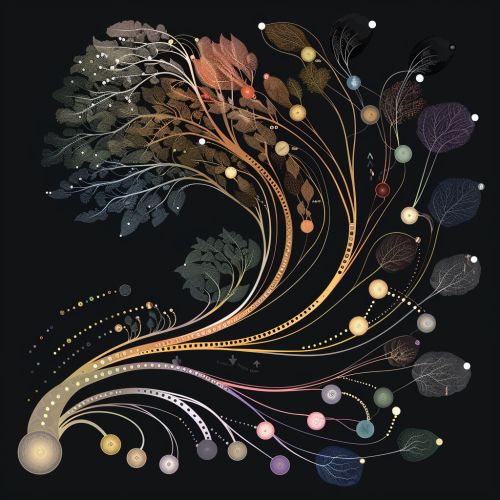Evolution of Languages
Introduction
The Evolution of Languages is a complex and ongoing process that involves the gradual development and change of languages over time. This process is influenced by a variety of factors, including social, cultural, and historical contexts, as well as the interaction between different languages and dialects.


Historical Overview
The study of language evolution is closely tied to the History of Linguistics, which traces the development of languages from their earliest known forms to the present day. The earliest known languages, known as Proto-languages, are believed to have originated in Africa around 100,000 to 200,000 years ago. From these early languages, a multitude of different language families and branches have evolved, each with their own unique characteristics and structures.
Factors Influencing Language Evolution
Language evolution is influenced by a variety of factors, including cultural, social, and historical contexts. Cultural factors, such as migration, trade, and conquest, can lead to the spread of languages and the borrowing of words and phrases. Social factors, such as class and social status, can also influence language evolution, leading to the development of different dialects and sociolects within a language. Historical factors, such as the passage of time and the influence of other languages, can lead to changes in a language's structure and vocabulary.
Mechanisms of Language Evolution
The mechanisms of language evolution involve changes in the phonology, morphology, syntax, and semantics of a language. These changes can occur gradually over time, or they can be triggered by specific events or circumstances. For example, the Great Vowel Shift in English, which occurred between the 14th and 18th centuries, led to significant changes in the pronunciation of vowels. Similarly, the Norman Conquest of England in the 11th century led to the introduction of many French words into the English language.
Language Families and Branches
There are several major language families in the world, each of which has evolved from a common ancestral language. These include the Indo-European, Sino-Tibetan, Afro-Asiatic, and Austronesian language families, among others. Within each language family, there are numerous branches and sub-branches, each with their own unique characteristics and structures.
Future of Language Evolution
The future of language evolution is uncertain, but it is likely to be influenced by factors such as globalization, technological advancements, and cultural changes. For example, the spread of English as a global lingua franca could lead to the extinction of smaller languages, while the rise of machine translation and artificial intelligence could lead to new forms of language and communication.
